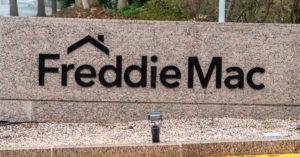The future direction of government-sponsored enterprises (GSEs) Fannie Mae and Freddie Mac has been a hot-button topic for debate across the multifamily and commercial mortgage industry. Commercial real estate professionals should be closely following the conversation around proposed GSE reforms.
Commercial mortgage brokers and lenders need to be sure their loan-servicing software is updated regularly to incorporate any changes affecting the GSEs and to satisfy investor requirements. Given the impact the GSEs have on daily business operations and the mortgage industry as a whole, mortgage brokers should prepare themselves now to avoid potential future headaches.
Proposals for GSE reform have been advanced by a variety of interests in the multifamily-housing sector. Multifamily rental housing represents a significant portion of the U.S. housing market, with more than one in three American households renting their dwellings and more than 19 million households residing in multifamily rental housing. The GSEs’ multifamily businesses may not be as large as their single-family portfolios, but their role is vitally important in supporting affordable housing.
The federal tax overhaul passed in late 2017 decreased the value of some tax-deferred assets on the GSEs’ books. That, along with other factors impacting the multifamily mortgage space, prompted the GSEs — which have been under government-supervised conservatorship since 2008 — to draw money from the U.S. Treasury for the first time in several years to cover losses sustained during fourth-quarter 2017.
The GSEs experienced a combined loss of about $10 billion in fourth-quarter 2017, much more than the $3 billion capital buffer set up for each enterprise. Consequently, Fannie Mae and Freddie Mac had to draw an aggregate $4 billion from the U.S. Treasury to offset these losses. Although the GSEs rebounded this past first quarter, the prospect of potential future losses and Treasury draws is a constant refrain and reminder of the GSEs’ precarious position.
There seems to be some consensus among commercial real estate professionals that the GSEs should not be gutted.
GSE reform most likely won’t happen in 2018, according to Treasury Secretary Steven Mnuchin. Federal Housing Finance Agency (FHFA) director Mel Watt’s term is up in January 2019 and the Trump administration is likely to replace him with someone who will push a GSE-reform agenda.
Suggestions for reform
GSE reform has been a divisive issue among policymakers, depending on their constituency and market philosophies. Similar to what’s happening among politicians, commercial mortgage professionals also disagree when it comes to GSE reform.
Despite the changing industry landscape, many commercial lenders continue to sell and service GSE loans. Last year, acknowledging the importance of the GSEs, a group of small lenders and some well-known affordable-housing groups released a reform proposal that advocated changes many community lenders hope to see shape the future GSE landscape.
Some of the suggested reforms include restructuring the capital buffers for Fannie Mae and Freddie Mac, maintaining the FHFA as an independent regulator of the GSEs, providing fair access for lenders of all sizes and ending the GSEs’ conservatorship status. In short, although commercial lenders and other industry experts have advanced a range of reform proposals, there seems to be some consensus among commercial real estate professionals that the GSEs should not be gutted or completely eliminated.
The Mortgage Bankers Association (MBA) has voiced its support for future GSE changes in which two or more guarantors engage in securitizing and guaranteeing multifamily mortgages under a utility-like business model. Although the guarantors would be owned by private shareholders under the MBA plan, the mortgage-backed securities (MBS) they issued would carry an explicit government guarantee.
Under the MBA’s proposed changes, taxpayers would gain several layers of protection, including risk sharing and transfers, a capital cushion for each guarantor and a mortgage insurance fund. Guarantor debt obligations, however, would not be backed by the government. The MBA recommends leveraging the existing infrastructure and processes of Fannie and Freddie, such as their multifamily deal structures that provide liquidity and place significant risk with private-capital providers.
Affordable-housing giants
The major multifamily mortgage-focused GSEs — Freddie Mac, Fannie Mae and Ginnie Mae — were originally established to provide lenders with more liquidity. Combined, Fannie Mae and Freddie Mac provided about $1 trillion in liquidity to mortgage markets in 2017, including millions of apartment units. At the end of 2017, the GSEs and government programs like the Federal Housing Administration held or guaranteed about $606 billion in commercial and multifamily loans, or 48 percent of multifamily mortgage debt outstanding. Origination volumes for the GSEs have grown significantly in recent years, from $57 billion in 2014 to $130 billion in 2017.
The federal government is the only entity that can ensure the availability of liquidity in all market cycles, including recessions. As demonstrated by the conservatorship of Fannie Mae and Freddie Mac, the federal government provides capital when necessary. In the wake of the most-recent economic downturn, the GSEs continued to provide monetary resources when many private-capital sources exited the multifamily mortgage market.
The GSEs support affordable housing through investments in individual multifamily properties or groups of properties, as well as through securitizations of loans on these underlying properties. During this past first quarter, Fannie Mae provided $11 billion in multifamily financing and helped to fund 154,000 new units of multifamily housing.
More than 90 percent of the multifamily units financed during the first quarter were classified as affordable to families earning at or below 120 percent of their area’s median income (AMI). Freddie Mac, meanwhile, funded $13 billion in new multifamily purchases during first-quarter 2018, equating to 152,000 new rental units, 83 percent of which were affordable for families earning 100 percent or less of AMI.
The Ginnie Mae difference
Ginnie Mae, which is also considered a government-sponsored enterprise, differs from the quasi-government corporations Fannie Mae and Freddie Mac in a few key ways. Unlike Fannie and Freddie, which define the conventional-loan market, Ginnie Mae is a federally owned corporation that is part of the U.S. Department of Housing and Urban Development. It deals with nonconventional loan products — such as home mortgages issued through the U.S. Department of Veterans Affairs, the Federal Housing Administration (FHA) and the U.S. Department of Agriculture.
One of the most notable differences between Ginnie Mae and the other two GSEs is that Ginnie Mae does not buy or sell loans. Instead, it guarantees investors the timely payment of principal and interest on mortgage-backed securities (MBS) underpinned by federally guaranteed loans. Unlike Fannie and Freddie, Ginnie securities also are backed by the full faith and credit of the U.S. government.
When it comes to commercial real estate, Ginnie Mae has a more limited focus than the other GSEs and concentrates its guarantee program entirely on multifamily housing. At the end of fiscal year 2017, the program guaranteed nearly 96 percent of all FHA-insured multifamily loans. Ginnie’s multifamily portfolio grew to $105.8 billion last year, the 23rd consecutive year of growth.
Tech paves the way
Commercial mortgage lenders continue supporting the GSEs today by selling and servicing GSE loans. Changes to GSE standards and regulations have required industry professionals to be flexible in their operations. And although many changes have been focused on the single-family sector, mortgage brokers and lenders should be vigilant in monitoring proposed reforms that may affect multifamily loans.
Mortgage professionals working with commercial and multifamily loans tied to GSE underwriting rules may be able to breathe easy as there are innovative mortgage-technology options on their side. Effective mortgage software enables lenders and originators to better adapt their current operations and effectively manage changes prompted by regulatory shifts, while also minimizing costs and inefficiencies.
To cope with an evolving regulatory landscape that likely includes future GSE reform, mortgage professionals should look for commercial-loan software that is consistently updated to reflect these changes. These software updates should provide sufficient time for users to become accustomed to the changes and be able to identify any impact the changes may have to the user’s business model.
From a servicing standpoint, commercial lenders should choose software that automates operations and simplifies the relationship with potential brokers and investors. The best commercial-mortgage servicing software provides lenders with the flexibility to handle a wide range of payment types, as well as the ability to store and easily access loan documents such as contracts, financial statements and monthly Billings.
Lastly, mortgage professionals should select a servicing platform that also includes robust compliance programs and interfaces, along with ancillary tools to support compliance needs. The ability to add user-defined fields, generate custom documents and reports, or define workflow, for example, will help mortgage professionals comply with regulatory requirements more easily and efficiently.
• • •
The GSEs provide liquidity to commercial lenders, who would have a significantly more difficult time financing commercial and multifamily loans without that assistance. Those who rely on the GSEs, including commercial mortgage brokers, know that keeping up with their reforms can be challenging. Wisely choosing a commercial-loan software provider can help industry professionals to work effectively with the GSEs, wherever they are headed in the future.
Author
-

Susan Graham is president and chief operating officer of Financial Industry Computer Systems Inc. (FICS), a mortgage-software company specializing in cost-effective mortgage loan origination, residential mortgage-servicing and commercial mortgage-servicing software for mortgage lenders, banks and credit unions. FICS’ software solutions use Microsoft .NET Framework and provide customers the flexibility to choose an in-house or cloud-hosting solution. FICS also provides document-management and web-based capabilities in its full suite of products.





